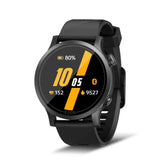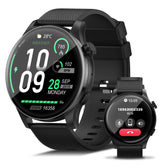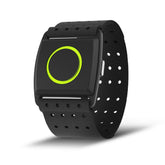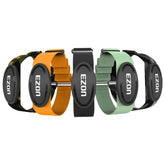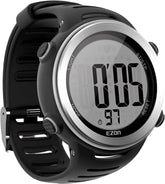The Science of Calorie Burning in Fitness
Understanding how your body burns calories during physical activity is essential for anyone looking to achieve fitness goals, whether it's weight loss, muscle gain, or overall health improvement. In this article, we will explore the various elements that contribute to calorie burn during exercise, including intensity, duration, and body composition. Additionally, we will provide insights on how to create effective calorie-burning fitness plans and the tools available, such as a calories burned calculator and calorie counter watches.
What is Calorie Burning?
Calorie burning refers to the process by which your body uses energy to perform various functions, including physical activity, digestion, and maintaining bodily functions at rest. The total number of calories your body burns in a day is known as your Total Daily Energy Expenditure (TDEE), which consists of three components:
- Basal Metabolic Rate (BMR): The energy required for basic bodily functions at rest.
- Physical Activity: The calories burned during exercise and daily movements.
- Thermic Effect of Food (TEF): The energy used to digest, absorb, and metabolize food.
Key Factors Influencing Calorie Burn
1. Intensity of Exercise
The intensity of your workouts plays a crucial role in determining how many calories you burn. Higher intensity workouts, such as high-intensity interval training (HIIT) or sprinting, can lead to significantly greater calorie expenditure compared to moderate activities like walking or light jogging.
- High-Intensity Exercise: Burns more calories in a shorter amount of time and may continue to burn calories post-exercise through the afterburn effect (excess post-exercise oxygen consumption, or EPOC).
- Moderate to Low-Intensity Exercise: Burns fewer calories during the activity but can still contribute to overall calorie burn, especially when performed for longer durations.
2. Duration of Activity
The longer you engage in physical activity, the more calories you will burn. For effective calorie-burning workouts, aim for at least 150 minutes of moderate-intensity or 75 minutes of high-intensity exercise each week, as recommended by health guidelines.
- Duration and Consistency: Longer sessions of consistent activity help increase overall calorie expenditure over time, leading to better fitness results.
3. Body Composition
Your body composition—the ratio of fat to lean muscle mass—also significantly influences your calorie-burning potential. Muscle tissue burns more calories at rest compared to fat tissue. Therefore, individuals with a higher percentage of muscle mass typically have a higher BMR and burn more calories throughout the day.
- Incorporating Strength Training: Adding resistance training to your fitness plan can help increase muscle mass, which in turn boosts your metabolism and overall calorie burn.
Tools to Track Calorie Burn
To effectively manage and optimize your calorie-burning efforts, utilizing technology can be incredibly beneficial. Here are some tools you might consider:
1. Calories Burned Calculator
A calories burned calculator can help estimate how many calories you burn during various activities based on factors such as weight, age, gender, and exercise type. This tool can provide you with a clearer picture of your energy expenditure and help you tailor your fitness plan accordingly.
2. Sports Wearable Technology
Investing in sports wearable technology such as fitness trackers can enhance your understanding of your caloric burn. These devices monitor heart rate, activity levels, and even sleep patterns, providing a comprehensive view of your health and fitness progression.
3. Calorie Counter Watches
A calorie counter watch is an excellent tool for tracking your heart rate and estimating calories burned during workouts in real-time. With features like GPS tracking and activity logging, these watches can help you stay accountable and motivated.
Creating Effective Calorie-Burning Fitness Plans
To create an effective fitness plan that maximizes calorie burn, consider the following tips:
- Mix It Up: Incorporate a variety of exercises, including cardio, strength training, and flexibility work, to keep your workouts interesting and effective.
- Set Goals: Establish clear, measurable goals for both calorie burn and overall fitness to keep you motivated and focused.
- Monitor Progress: Use tools like a calories burned calculator and calorie counter watches to track your progress and make necessary adjustments to your workout routine.
- Stay Consistent: Consistency is key. Aim for regular workouts and gradually increase intensity and duration as your fitness level improves.
Conclusion
Understanding the science of calorie burning in fitness is vital for anyone looking to optimize their workouts and achieve specific health goals. By considering factors such as intensity, duration, and body composition, you can create a tailored fitness plan that maximizes calorie expenditure. Utilizing tools like a calories burned calculator, sports wearable technology, and a calorie counter watch can further enhance your efforts and keep you on track toward success. Start your journey today and unlock the power of effective calorie burning in your fitness routine!
